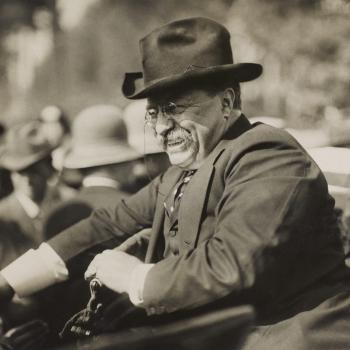America is the land of the free but liberty comes with its limits. Protestants can’t have prayer and Bible reading in public schools, Roman Catholics have to get right with the separation of church and state, Jews can’t have a king, and Muslims can’t have Sharia law.
A similar dynamic has been at work in Mormonism. Whey Joseph Smith started out, Mormons were a group set apart thanks to many beliefs and practices. But once Utah became a state and Mormons abandoned polygamy, they confronted what other religious groups have faced throughout U.S. history. In a review of Mormonism in the Twentieth Century (1967), Klaus Hansen wrote this:
One of the most significant underlying factors in the success story that is twentieth century Mormonism in the eyes of the authors has been the emergence of a positive image for the Church. But such an image, it seems to me, can be a two-edged sword. It is something in which we all naturally take great pride; and yet, ought we not to be wary? Aren’t images, by definition, derived from appearances? The authors themselves admit that the change in image became permanent as the world began to focus on the “program [my italics] of the Mormon Church rather than in its theology.” To the mass media Mormonism has become yet another American success story in a society that measures success largely by material standards: Mormons have become eminently adept at imitating and assimilating American middle-class values; therefore, Mormons are okay.
But I wonder to what degree this acceptance, that has gone far beyond mere toleration, is not merely a subtle indication that Mormonism has lost its identity in the twentieth century — that it is a harmless idiosyncrasy in which otherwise decent folk may be allowed to participate just as some choose to collect stamps and others play the ouija board. And by emphasizing this theme of acceptance, I wonder if the authors have not played into the hands of the critics of Mormonism, such as social historian Christopher Lasch, who argued in The New York Review of Books (January 26, 1967) that:
It is not as a religious force that Mormonism now makes itself felt. It makes itself felt precisely in the degree to which Mormon influence has ceased to be distinguishable from any other vested influence. As long as the Mormons were different from their neighbors, their neighbors hounded them mercilessly. Only when they gave up the chief distinguishing features of their faith did the Latter-day Saints establish themselves as a fixture of the ecclesiastical scene, another tolerated minority.
This is the lesson, if you like, of Mormon history. . . . If we are indeed still Mormons, must we not seek our identity beyond the rising membership statistics, the growing success of our Welfare Plan, and even the increasing number of temples, not to speak of the impressive gallery of businessmen, politicians, actors, cabinet members, golf players, astronauts, and educators to whom we point with justifiable pride? Must we not turn to those values which are rooted in our history, even if that history may sometimes be uncomfortable?
This may be what Rod Dreher is up to with the Benedict Option. But I continue to wonder how any Christian wasn’t thinking about the dangers of acceptance well before the current moment. After all, Jesus did ask, “What does it profit a man if he gains the whole world and loses his own soul?” (Mark 8:36)












